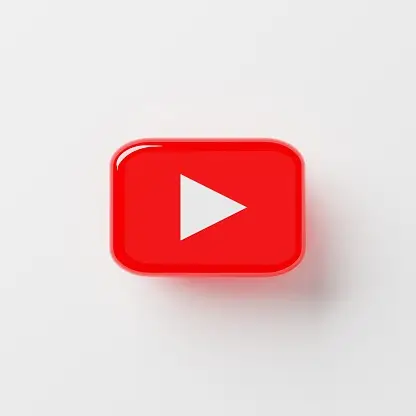Creating a successful YouTube channel is more than just uploading videos; it’s about crafting a strategic plan, engaging with your audience, and consistently delivering high-quality content that resonates. Whether you’re just starting or looking to elevate your existing channel, understanding the key elements that contribute to success is crucial. This comprehensive guide covers everything from identifying your niche and understanding your audience to optimizing your videos for SEO and monetizing your channel. By following these best practices, you can build a thriving YouTube presence, attract loyal subscribers, and ultimately achieve your goals. Let’s dive into the essential steps and strategies for creating a YouTube channel that stands out and succeeds.
Understanding Your Niche and Audience
Identifying Your Niche
Choosing the right niche is the first step towards creating a successful YouTube channel. A niche is a specific area of interest that your content will focus on. Selecting a niche that you’re passionate about and have expertise in is crucial for maintaining long-term motivation and credibility.
Points to consider:
- Passion and Expertise: Choose a niche that you’re passionate about and have sufficient knowledge in.
- Market Demand: Research the demand for content in your chosen niche. Use tools like Google Trends and YouTube Analytics to identify popular topics.
- Competition Analysis: Analyze other successful channels in your niche. Understand their content strategy, audience engagement, and monetization methods.
Understanding Your Target Audience
Knowing your audience is key to creating content that resonates with them. Understanding their demographics, preferences, and pain points will help you tailor your content to meet their needs.
Points to consider:
- Demographics: Identify the age, gender, location, and other relevant demographics of your target audience.
- Preferences: Understand the types of content your audience prefers. This includes video formats, topics, and presentation styles.
- Engagement: Pay attention to how your audience interacts with your content. Use comments, likes, and shares as indicators of what works and what doesn’t.
Setting Up Your YouTube Channel
Creating Your YouTube Account
Before you start uploading videos, you need to create a YouTube account. This process is straightforward and requires a Google account.
Steps:
- Sign Up: Go to YouTube and sign up using your Google account.
- Create a Channel: Click on your profile picture and select “Create a channel.”
- Channel Name: Choose a channel name that reflects your niche and is easy to remember.
Optimizing Your Channel
Optimizing your channel is crucial for attracting and retaining subscribers. This includes creating an attractive channel banner, writing a compelling channel description, and setting up relevant links.
Points to consider:
- Channel Banner: Design a visually appealing channel banner that represents your brand. Use tools like Canva or Adobe Spark to create professional-looking graphics.
- Channel Description: Write a detailed channel description that explains what your channel is about and what viewers can expect. Include relevant keywords to improve search visibility.
- Links: Add links to your social media profiles, website, and other relevant platforms. This helps viewers connect with you outside of YouTube.
Creating High-Quality Content
Planning Your Content
Content planning is essential for maintaining consistency and ensuring that your videos align with your audience’s interests. Create a content calendar to organize your ideas and schedule your uploads.
Points to consider:
- Content Ideas: Brainstorm a list of content ideas based on your niche and audience preferences. Use tools like TubeBuddy and VidIQ to find trending topics.
- Content Calendar: Create a content calendar to plan your uploads. This helps you stay organized and ensures that you consistently publish new content.
- Research: Conduct thorough research on each topic to provide valuable and accurate information in your videos.
Producing High-Quality Videos
High-quality videos are essential for attracting and retaining viewers. Invest in good equipment and software to produce professional-looking videos.
Points to consider:
- Equipment: Invest in a good camera, microphone, and lighting equipment. High-quality audio and video make a significant difference in viewer experience.
- Editing Software: Use editing software like Adobe Premiere Pro, Final Cut Pro, or DaVinci Resolve to edit your videos. Edit out any unnecessary parts and add graphics, transitions, and effects to enhance your content.
- Thumbnails: Create eye-catching thumbnails that encourage viewers to click on your videos. Use bold text, vibrant colors, and relevant images to make your thumbnails stand out.
Optimizing Your Videos for SEO
Keyword Research
Keyword research is crucial for optimizing your videos for search engines. By targeting the right keywords, you can increase the visibility of your videos and attract more viewers.
Points to consider:
- Tools: Use tools like Google Keyword Planner, TubeBuddy, and VidIQ to find relevant keywords.
- Long-Tail Keywords: Focus on long-tail keywords that are specific and have lower competition. These keywords are more likely to attract targeted viewers.
- Placement: Include your target keywords in the video title, description, and tags. Ensure that your keywords are naturally integrated and relevant to your content.
Optimizing Video Titles and Descriptions
Optimizing your video titles and descriptions is essential for improving search visibility and attracting viewers.
Points to consider:
- Titles: Create compelling and descriptive titles that include your target keywords. Keep your titles under 60 characters to ensure they are fully displayed in search results.
- Descriptions: Write detailed video descriptions that provide an overview of your content. Include relevant keywords and links to related videos, your channel, and other platforms.
- Tags: Use relevant tags to help YouTube understand the context of your videos. Include a mix of broad and specific tags to maximize your reach.
Engaging with Your Audience
Building a Community
Building a community around your channel is crucial for long-term success. Engage with your viewers by responding to comments, hosting live streams, and creating interactive content.
Points to consider:
- Comments: Respond to comments on your videos to show your appreciation and engage with your audience. This helps build a sense of community and encourages viewers to interact with your content.
- Live Streams: Host live streams to connect with your audience in real-time. Live streams provide an opportunity to answer questions, share updates, and build stronger relationships with your viewers.
- Interactive Content: Create interactive content like Q&A sessions, polls, and challenges to encourage viewer participation. This helps increase engagement and makes your audience feel more involved.
Collaborating with Other Creators
Collaborating with other creators is an effective way to expand your reach and attract new viewers. Partner with creators who have a similar audience and complementary content.
Points to consider:
- Finding Collaborators: Identify creators in your niche who have a similar audience and content style. Reach out to them with collaboration ideas that provide mutual benefits.
- Collaboration Ideas: Consider collaborations like guest appearances, joint videos, and shoutouts. Collaborations can help you reach new audiences and provide fresh content for your viewers.
- Promoting Collaborations: Promote your collaborations on your social media profiles, website, and other platforms to maximize exposure.
Analyzing and Improving Your Performance
Using YouTube Analytics
YouTube Analytics provides valuable insights into your channel’s performance. Use this data to understand your audience, track your progress, and identify areas for improvement.
Points to consider:
- Metrics: Track key metrics like views, watch time, audience retention, and engagement. These metrics help you understand how your videos are performing and what resonates with your audience.
- Demographics: Analyze demographic data to understand your audience’s age, gender, location, and other characteristics. This information helps you tailor your content to better meet their needs.
- Traffic Sources: Identify where your viewers are coming from, whether it’s search, suggested videos, or external sources. This helps you optimize your promotion strategies and focus on the most effective channels.
Continuously Improving Your Content
Continuously improving your content is essential for maintaining growth and staying relevant. Use feedback, analytics, and industry trends to refine your content strategy.
Points to consider:
- Feedback: Pay attention to viewer feedback in comments, surveys, and social media. Use this feedback to identify areas for improvement and new content ideas.
- Trends: Stay updated with industry trends and changes in YouTube’s algorithm. Adapting to trends and best practices helps you stay competitive and attract new viewers.
- Experimentation: Experiment with different content formats, styles, and topics to see what works best for your audience. Use A/B testing to compare the performance of different video elements and strategies.
Monetizing Your YouTube Channel
Joining the YouTube Partner Program
The YouTube Partner Program (YPP) allows you to monetize your channel through ads. To join the YPP, you need to meet specific eligibility requirements.
Points to consider:
- Eligibility: To be eligible for the YPP, you need at least 1,000 subscribers and 4,000 watch hours in the past 12 months. You must also comply with YouTube’s policies and guidelines.
- Ad Revenue: Once you’re accepted into the YPP, you can start earning ad revenue from your videos. YouTube will place ads on your videos, and you’ll earn a share of the revenue based on ad impressions and clicks.
- Ad Types: There are different types of ads, including display ads, overlay ads, skippable video ads, and non-skippable video ads. Experiment with different ad formats to see which ones generate the most revenue.
Exploring Other Revenue Streams
In addition to ad revenue, there are several other ways to monetize your YouTube channel. Diversifying your revenue streams helps you maximize your earning potential and reduce reliance on a single source of income.
Points to consider:
- Sponsorships: Partner with brands and companies for sponsored content. Sponsorships can provide a significant source of income and help you build relationships with industry players.
- Merchandise: Sell branded merchandise like t-shirts, mugs, and other products to your audience. Use platforms like Teespring and Merchbar to create and sell your merchandise.
- Crowdfunding: Use crowdfunding platforms like Patreon and Kickstarter to receive financial support from your audience. Offer exclusive content, perks, and rewards to your supporters.
- Affiliate Marketing: Promote products and services through affiliate marketing. Include affiliate links in your video descriptions and earn a commission for every sale made through your links.
Promoting Your YouTube Channel
Leveraging Social Media
Social media is a powerful tool for promoting your YouTube channel and reaching new audiences. Use platforms like Facebook, Twitter, Instagram, and TikTok to share your content and engage with your audience.
Points to consider:
- Cross-Promotion: Share your videos on your social media profiles to increase visibility and attract new viewers. Use relevant hashtags and engage with trending topics to reach a broader audience.
- Engagement: Interact with your followers by responding to comments, participating in discussions, and sharing behind-the-scenes content. Building a strong social media presence helps you connect with your audience and drive traffic to your YouTube channel.
- Social Media Ads: Consider running paid social media ads to promote your channel and reach a targeted audience. Platforms like Facebook Ads and Instagram Ads offer advanced targeting options to help you reach the right viewers.
Building an Email List
An email list is a valuable asset for promoting your YouTube channel and keeping your audience engaged. Use email marketing to share updates, promote new videos, and offer exclusive content.
Points to consider:
- Lead Magnets: Offer lead magnets like free downloads, exclusive videos, or e-books to encourage viewers to subscribe to your email list.
- Email Campaigns: Create regular email campaigns to keep your subscribers informed and engaged. Share updates, behind-the-scenes content, and links to your latest videos.
- Personalization: Personalize your emails to make them more relevant and engaging. Use your subscribers’ names and segment your list based on their interests and preferences.
Staying Committed and Consistent
Maintaining Consistency
Consistency is key to building a successful YouTube channel. Regular uploads help you stay top-of-mind with your audience and keep them coming back for more.
Points to consider:
- Upload Schedule: Create and stick to a consistent upload schedule. Whether it’s weekly, bi-weekly, or monthly, consistency helps build anticipation and trust with your audience.
- Content Quality: Maintain a high standard of quality for all your videos. Consistent quality builds your reputation and encourages viewers to subscribe and stay engaged.
- Batch Production: Consider batch-producing your videos to stay ahead of your schedule. This helps you maintain consistency even during busy periods or unforeseen circumstances.
Staying Motivated and Adaptable
Building a successful YouTube channel takes time, effort, and perseverance. Stay inspired and adaptable to overcome challenges and achieve long-term success.
Points to consider:
- Setting Goals: Set realistic and achievable goals for your channel. Track your progress and celebrate your milestones to stay motivated.
- Adapting to Change: Be open to change and ready to adapt to new trends, technologies, and audience preferences. Staying flexible helps you stay relevant and competitive.
- Continuous Learning: Invest in continuous learning and self-improvement. Stay updated with industry news, attend workshops, and learn from other successful creators.
Conclusion
Creating a successful YouTube channel is a rewarding journey that requires dedication, creativity, and strategic planning. By understanding your niche and audience, producing high-quality content, optimizing for SEO, engaging with your community, and exploring monetization opportunities, you can build a thriving YouTube channel. Stay committed, consistent, and adaptable, and you’ll be well on your way to YouTube success.
With these insights and best practices, you’re now equipped to take your YouTube channel to the next level. Start implementing these strategies today, and watch your channel grow and succeed.




